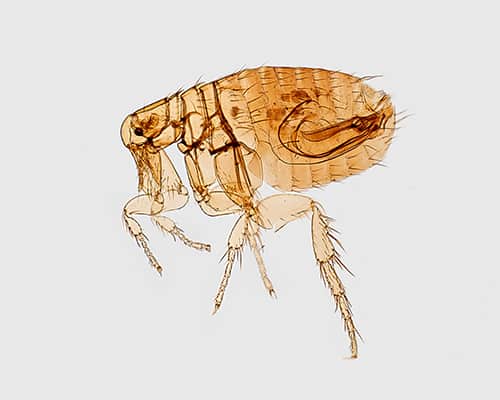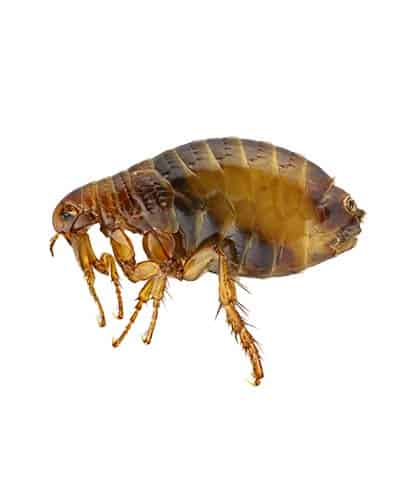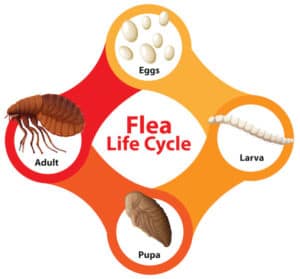Flea Extermination
Fleas are wingless, blood-feeding insects about 1/16 to 1/8 inch (1.5–3.3 mm) long. The name "flea" is derived from the Latin word "fluere", meaning "to fly". Like many other insect larvae, fleas have slender bodies and no limbs, letting them move through their environments as easily as possible. Their bodies are laterally compressed, permitting easy movement through their host's fur or feathers; this characteristic is also seen in related insects such as the Ceratopogonidae. After further research on fleas, I have found the specific diagram of fleas, how they leave and their four lifecycle stages.

Diagram of Fleas

Adult fleas have eight legs, a pair of antennae, and chewing mouthparts. They are small enough that they can pass through most of the flea-control products designed to kill adults. Females lay white, oval-shaped eggs, about 1/32 inch (1 mm) long. The larvae are small and pale, have bristles covering their wormlike bodies, lack eyes, and resemble maggots.
How They Live
Adults feed by consuming blood, and larvae feed on skin and/or feathers. They jump using strong muscles in the body, a Y-shaped structure called a “triprohinal muscle” — one that is enlarged and modified for jumping. Fleas use the same mechanism to leap as fleas. Fleas can survive for several months without eating, if they stay away from sunlight. The larvae are covered in bristles which makes them difficult for predators to grasp.
Four Lifecycle Stages

Fleas are holometabolous insects, going through the four lifecycle stages of egg, larva, pupa, and adult. The flea life cycle begins when an adult female lays after feeding. Eggs are laid in batches of about 20–50, usually on the host itself, which means that the eggs readily fall onto the ground. The eggs are round, white and about 1/32 inch (1 mm) in diameter. The larvae hatch from the egg after about 4 days if it is at a comfortable temperature – ideal conditions being 21–28 °C (70–82 °F). Six days after hatching, the larvae pupate into an intermediate stage, spending about 9 days in this phase. This phase is known as the “pre-imaginal” stage. A blood meal is necessary for the completion of the flea life cycle: without a blood meal, most eggs will die within a few weeks, but a small percentage will survive into Adulthood.
The larval stage lasts from days 9–14, during which time the larvae feed on tiny amounts of debris and the fluids from adult fleas attracted to the host. The pre-pupal stage follows, lasting from days 15–20, during which time the larvae spin silk pads to which they attach and enter a quiescent period. They spin cocoons in which they metamorphose into pupae, from which they emerge after 3–4 days as adult fleas. Adults live for 4–6 weeks, feeding on blood every day or two (which is necessary for developing eggs). Adult females will lay between 50 and 70 eggs in their lifetimes. These eggs drop off the host, or are groomed and consumed; they fall into carpet fibers, cracks in the floor or ground, and other crevices where they can hide until conditions are favorable for hatching.During feeding, flea saliva is injected into the host, which acts as an anticoagulant (it thin the blood), preventing clotting. This action serves to make the feeding of fleas on their host more effective.
Flea Bites
Flea bites generally cause itching and sometimes a rash. The classic sign of a bite is two small puncture wounds with central redness, often with a black dot at the center (the two puncture marks are the insect’s mouthparts). If they are not causing itching, or if they are grouped too close together to easily count, flea bites may be mistaken for flea dirt (small black specks of digested blood that resemble sesame seeds) and other skin problems like scabies.

